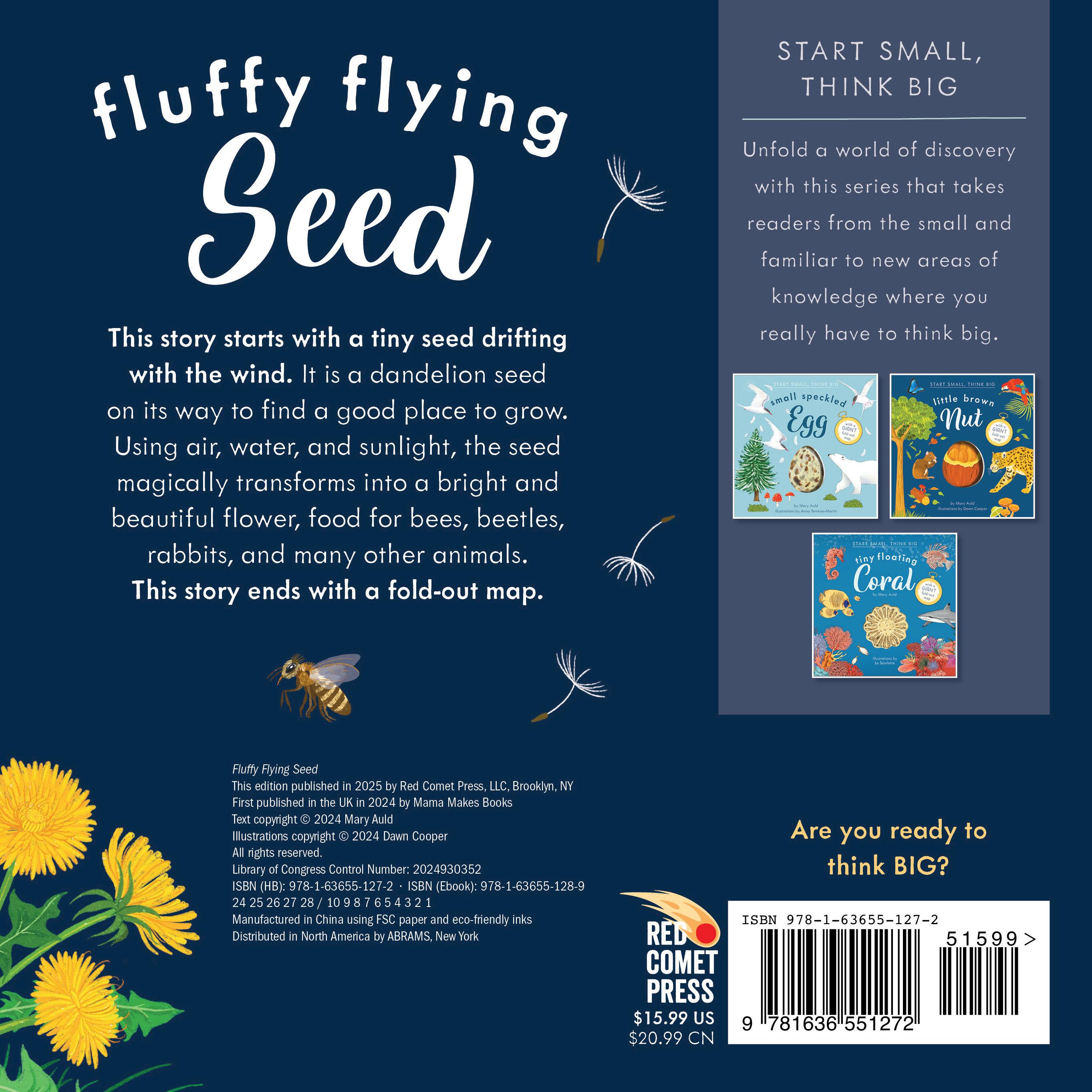




by Mary Auld
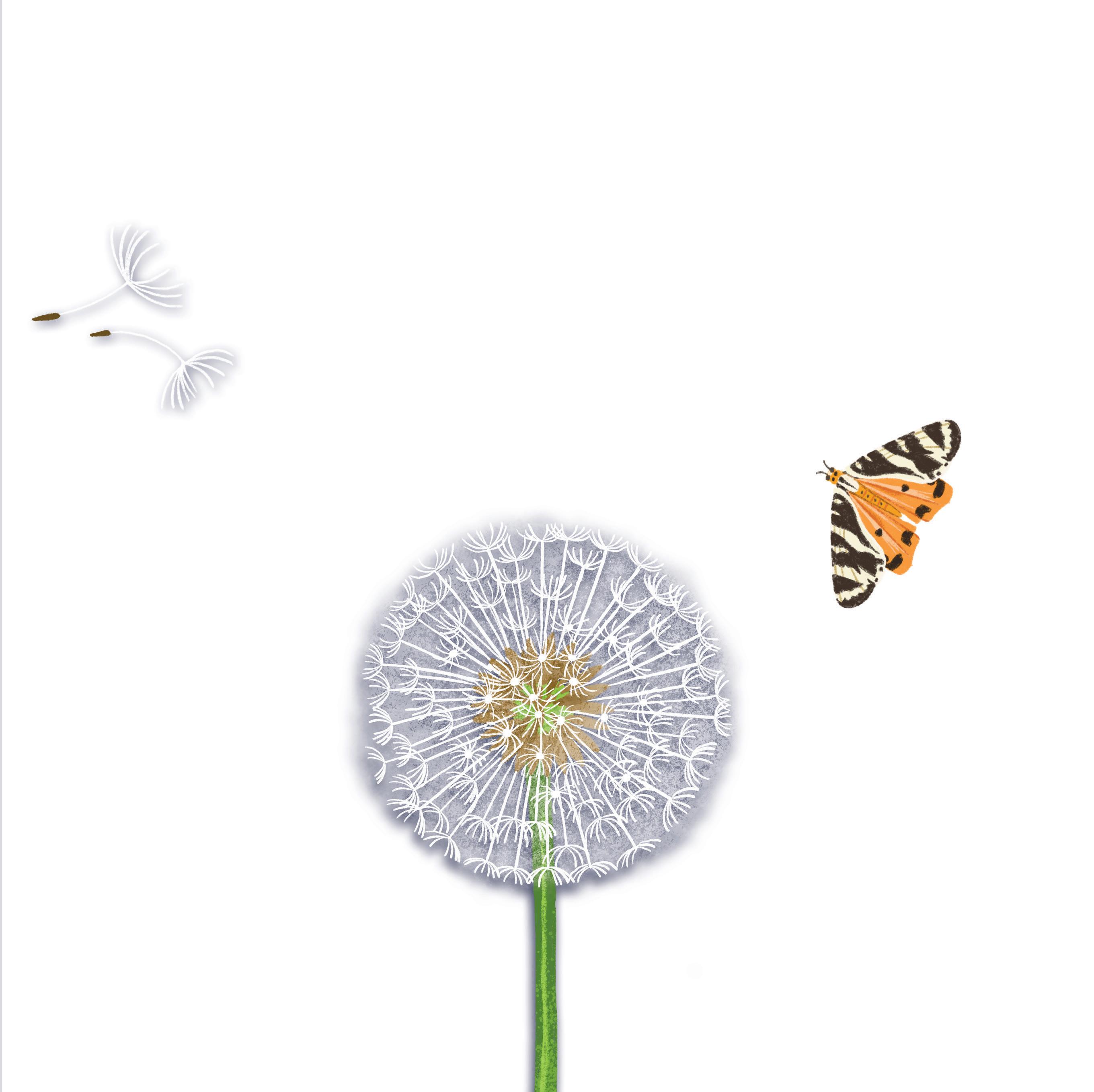
illustrations by Dawn Cooper
consultant botanist
Josh Styles MSc
Here are tiny seeds drifting through the air. They are the seeds from a dandelion plant, and one of them is me.
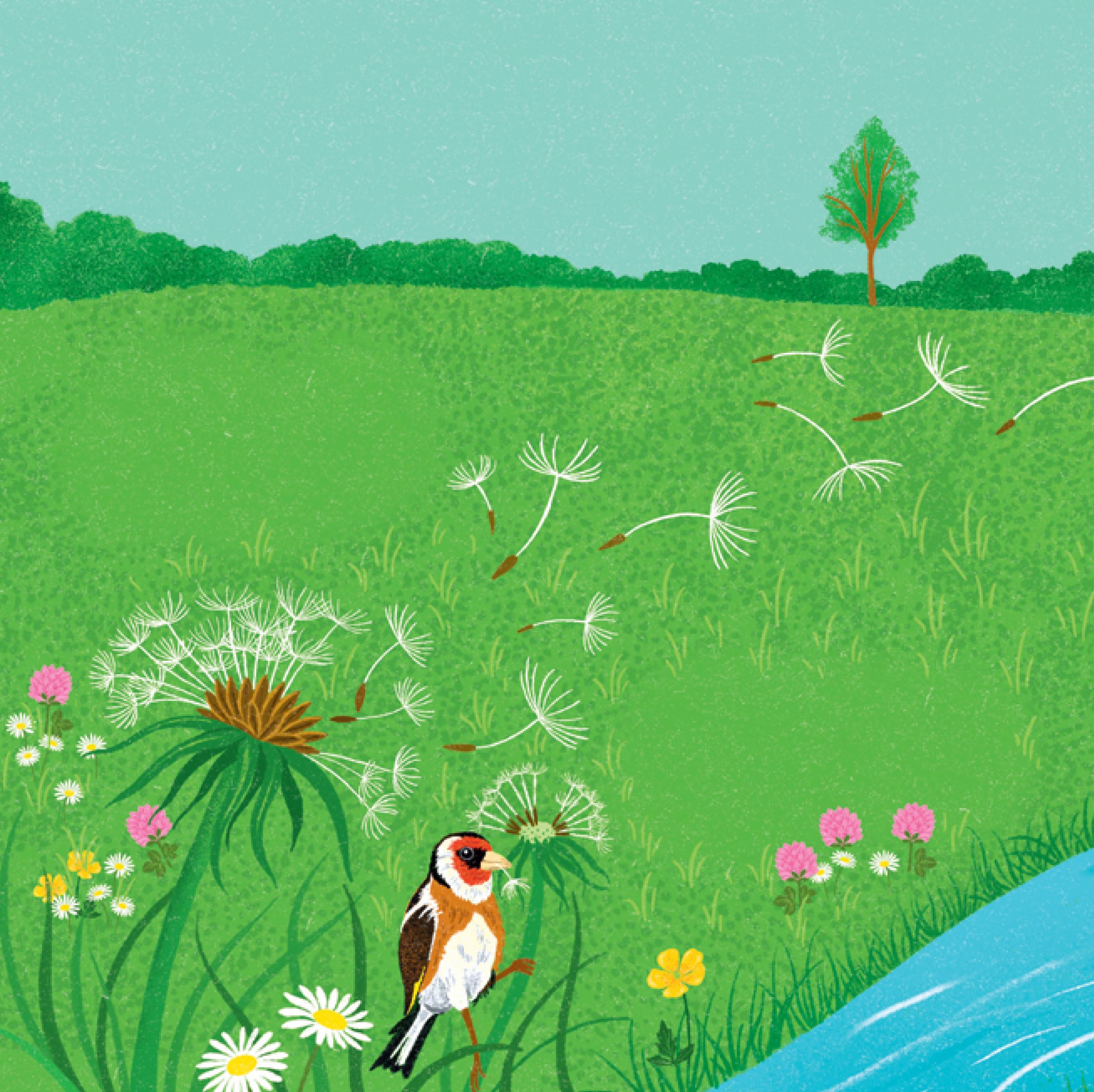
Flowering plants such as dandelions make seeds. A seed is a little package that holds a baby plant.
The seed is protected by a hard casing. It is attached to a fluffy parachute, so it can be lifted and carried by the wind.
One by one we drop to the ground. Some of us land in water. Some of us are eaten by birds.
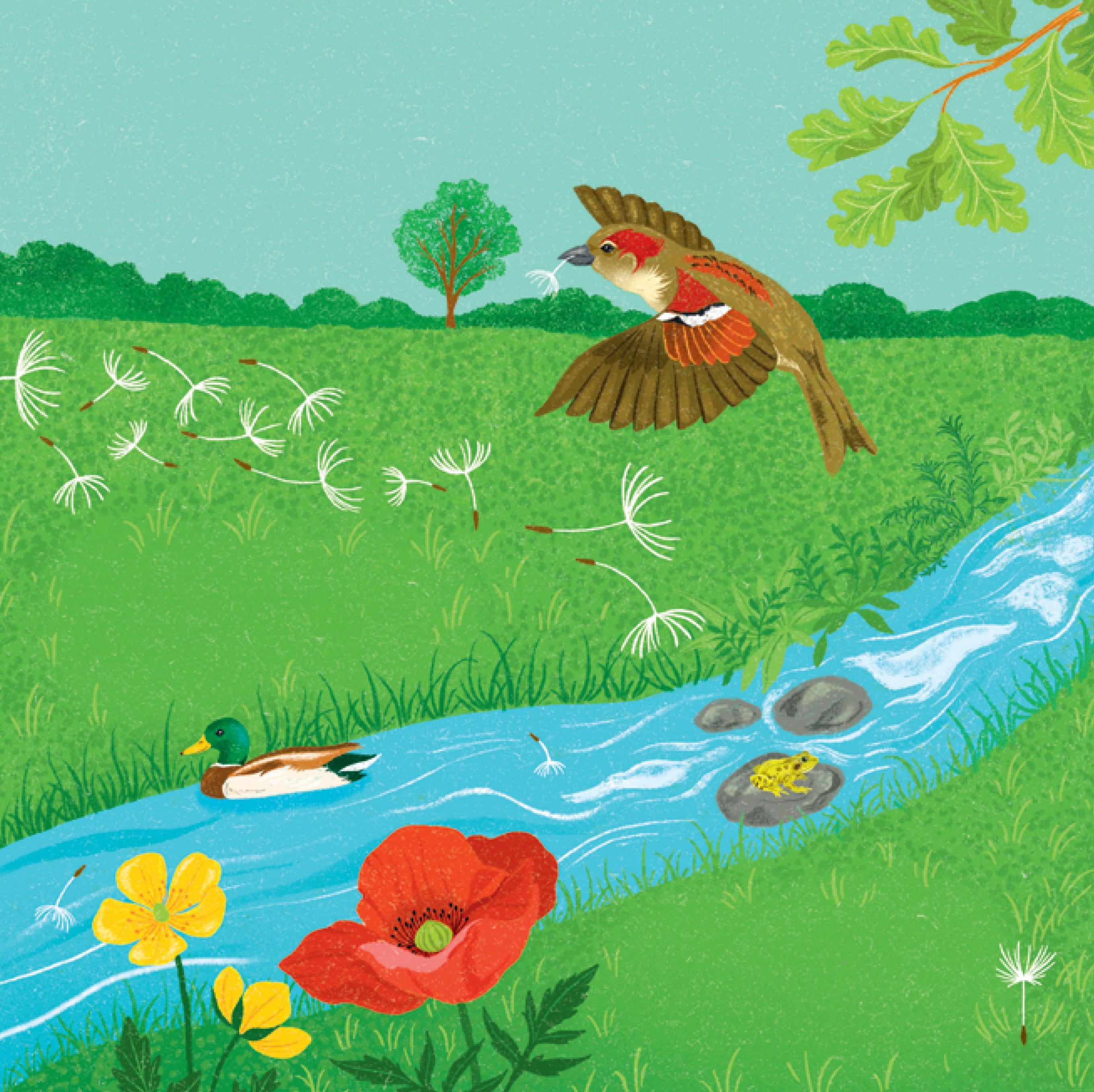
Dandelion seeds blow away from their parent plant on the wind. This gives them space to grow well.
I am lucky. I land in a grassy field—a perfect place for me to grow.
Here I am starting to grow.
My taproot pushes down into the ground. My leaves push upward.
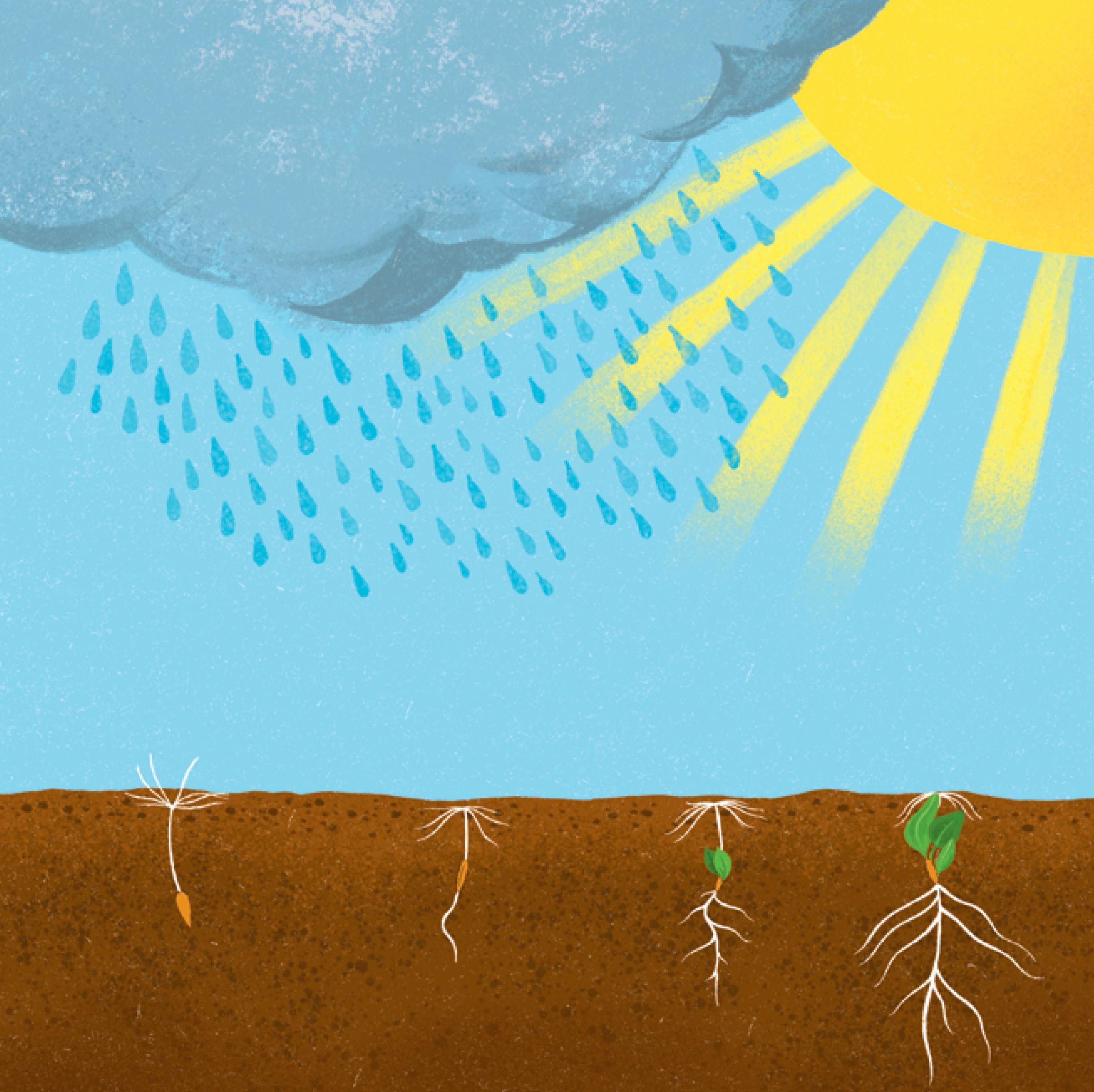
A seed starts to grow after about two or three weeks in the ground.
The taproot is strong. It holds the dandelion plant in place. The taproot pushes out of the seed’s hard case.
Tiny hairlike strands reach out off the taproot. They take in water and goodness from the soil.
Here are my first leaves growing above the ground. Small and green, they make my food so I can grow bigger. They just need air, water, and sunlight!
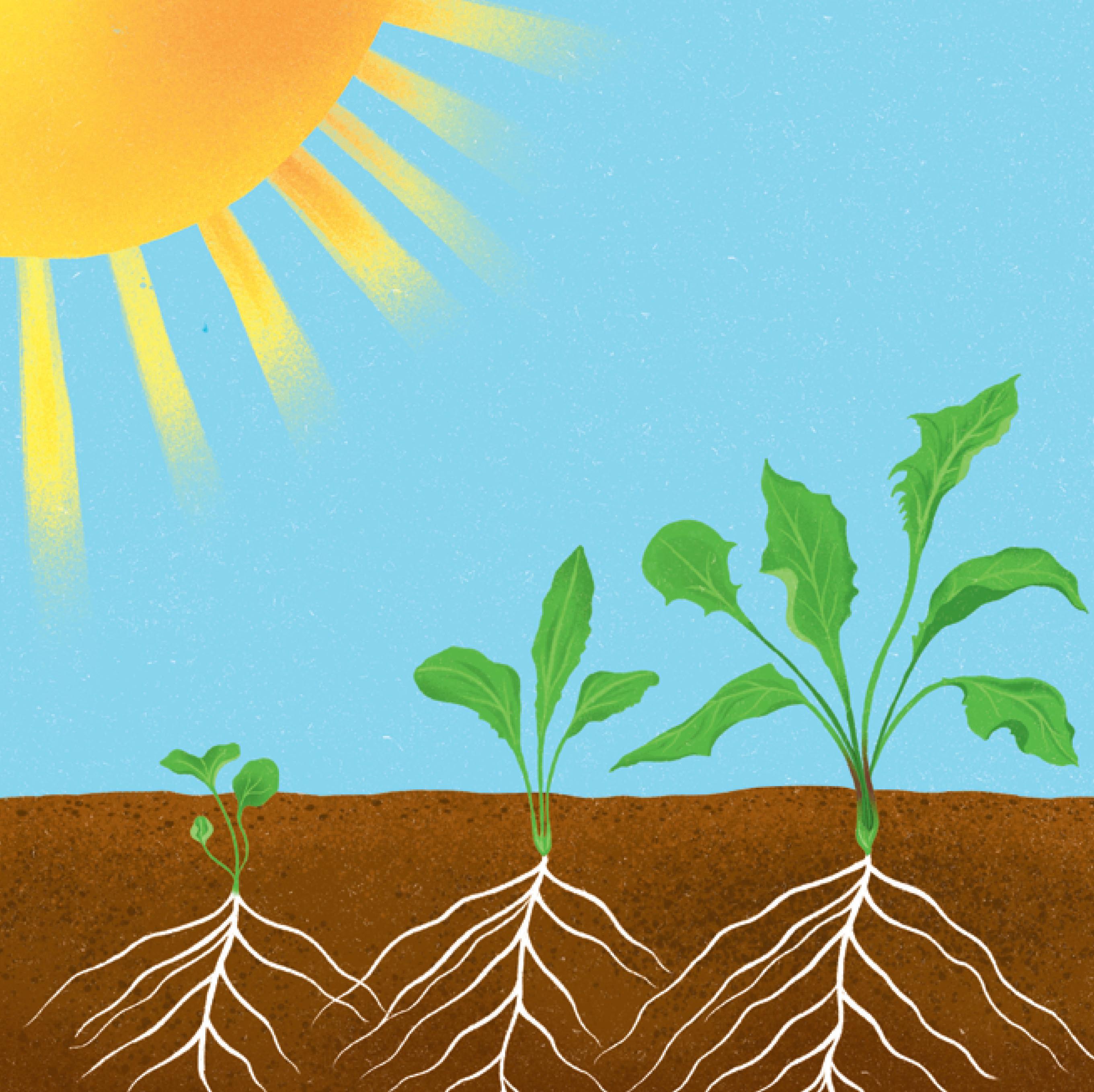
The first leaves push up. They take in carbon dioxide from the air through tiny holes. The carbon dioxide mixes with water from the roots.
The leaves trap light energy from the sun. They use this to change the carbon dioxide and water into the plant’s food and oxygen.
The dandelion uses the food energy to grow, and the oxygen is released into the air.
Here I am, bigger, stronger, and tastier! My large, jagged leaves make lots of food for me and provide food for others.
The dandelion’s leaf shape gives it its name—it comes from dent-de-lion, French for lion’s tooth.

Lots of animals, from caterpillars to deer, feed on the leaves, but the dandelion can grow more of them.
Here I am starting to flower. It is spring and I have grown buds on tall, hollow stalks. Look at all my different parts. bud
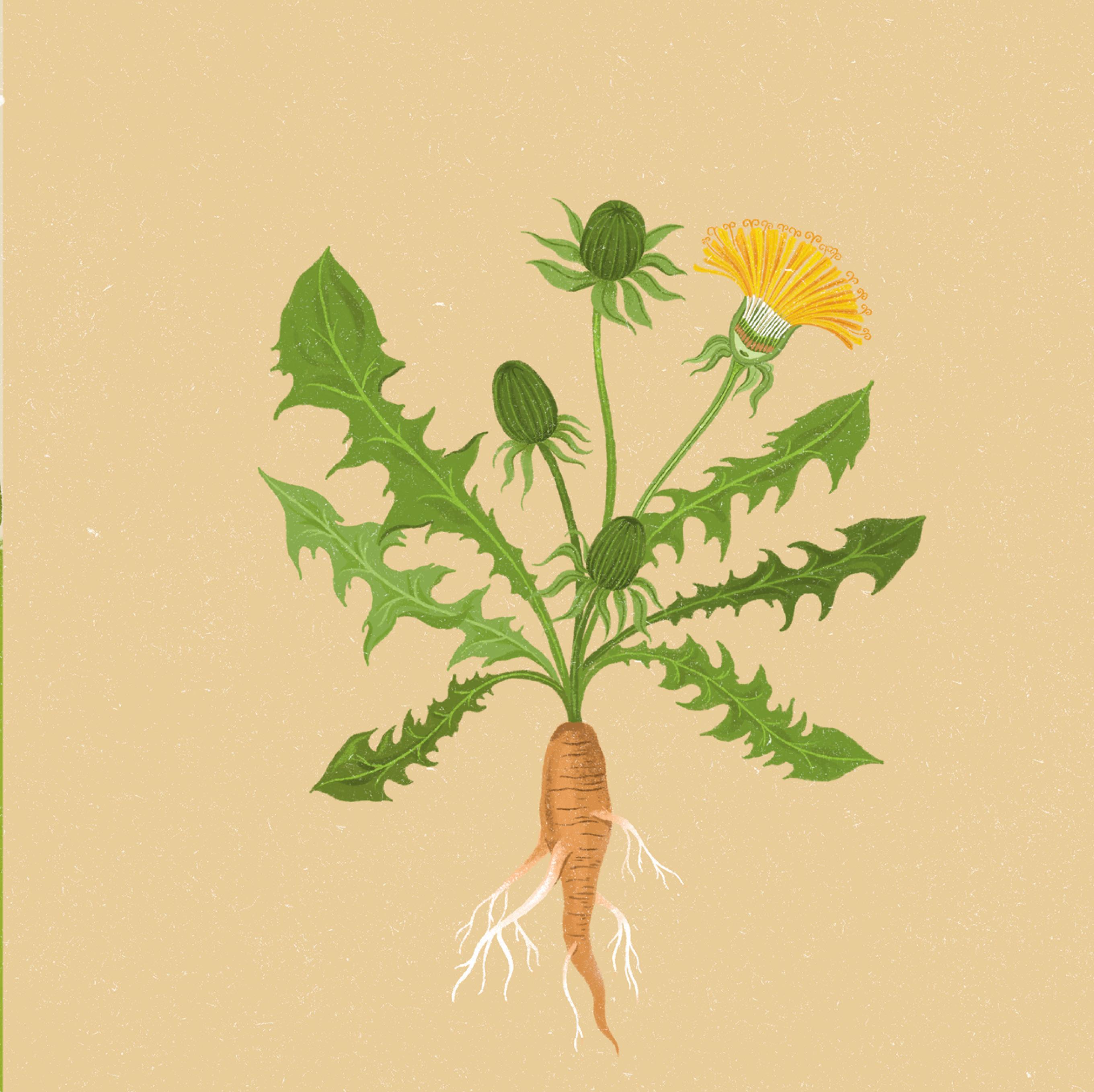
leaf
Break one of the stalks and a milky liquid flows from it. This is latex. Bitter latex protects the roots and stalks from being eaten.
taproot bracts (the bud’s leaves)
florets with stigmas covered in pollen
petals
stalk
Here are my flowers. My buds have opened in the spring sunshine. My flower heads are like little suns! Bees buzz around them.
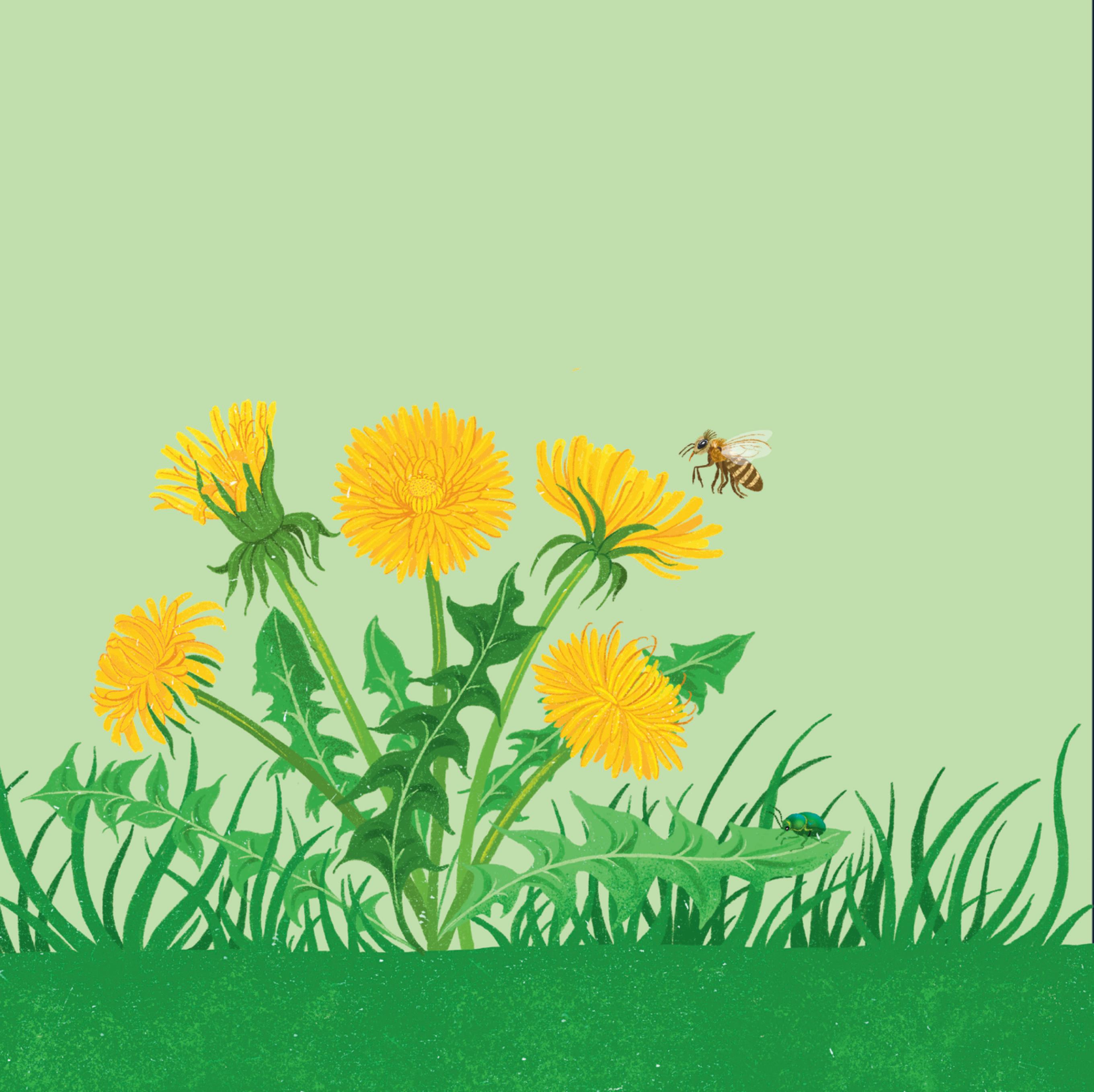
A dandelion’s yellow petals surround a flower head made of around 100 tiny florets. These are tiny flowers.
Dandelion florets make nectar and pollen, food for insects, such as honeybees.
Dandelions are an important source of food for insects in the spring. Most other plants flower later in the year.
The night is falling. The sky is clear and it is frosty. My flowers are closing up tight, safe from the cold.
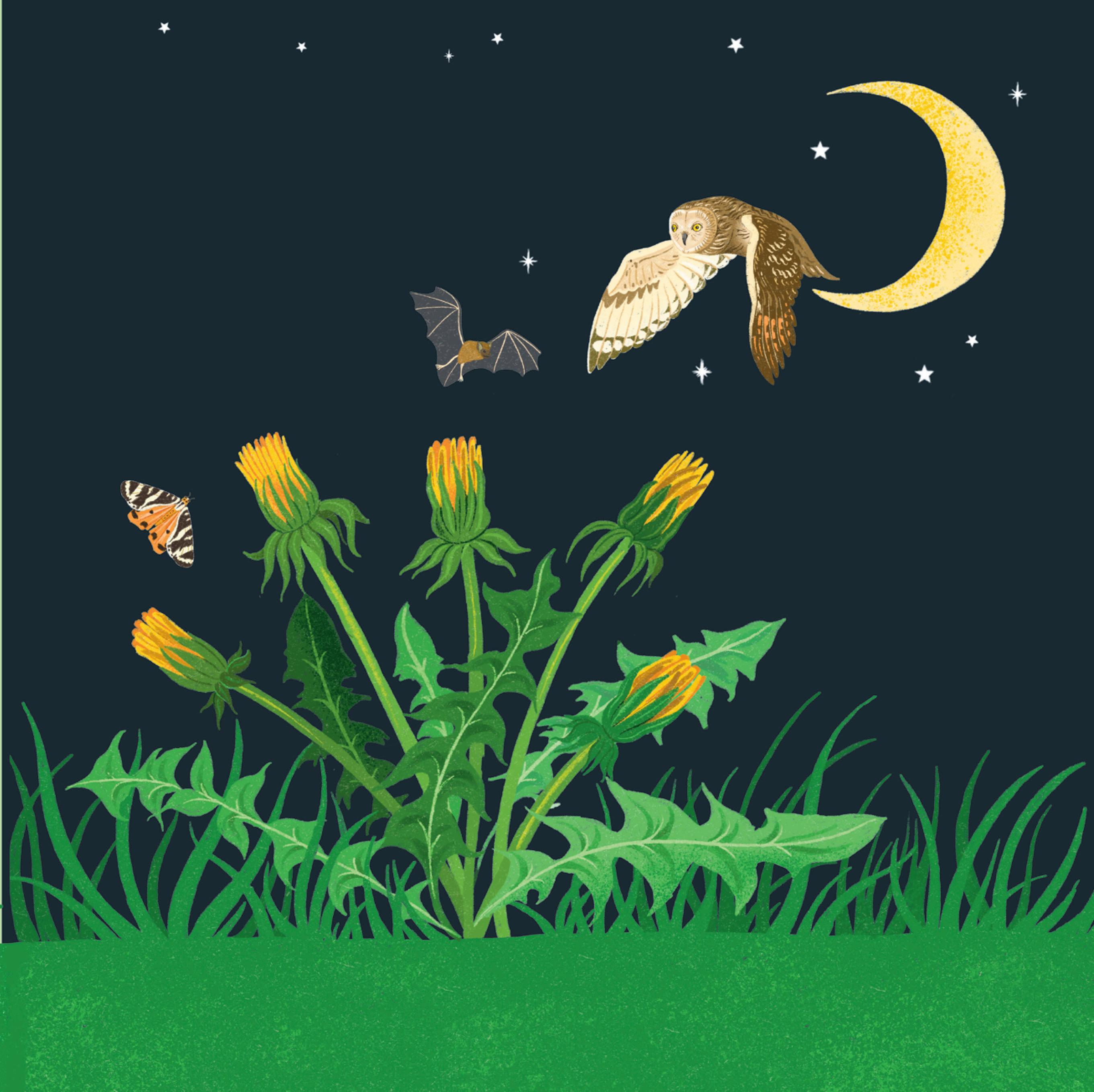
Dandelion flower heads close up when it gets dark. The green bracts that grow around the flower protect it from the cold.
The closed bracts keep the nectar fresh and the pollen dry inside the flower—ready for the insects in the morning.
Here is my meadow. It is full of dandelions and other flowers among the grasses. The summer is arriving and the sunshine gives us the energy we need to grow.
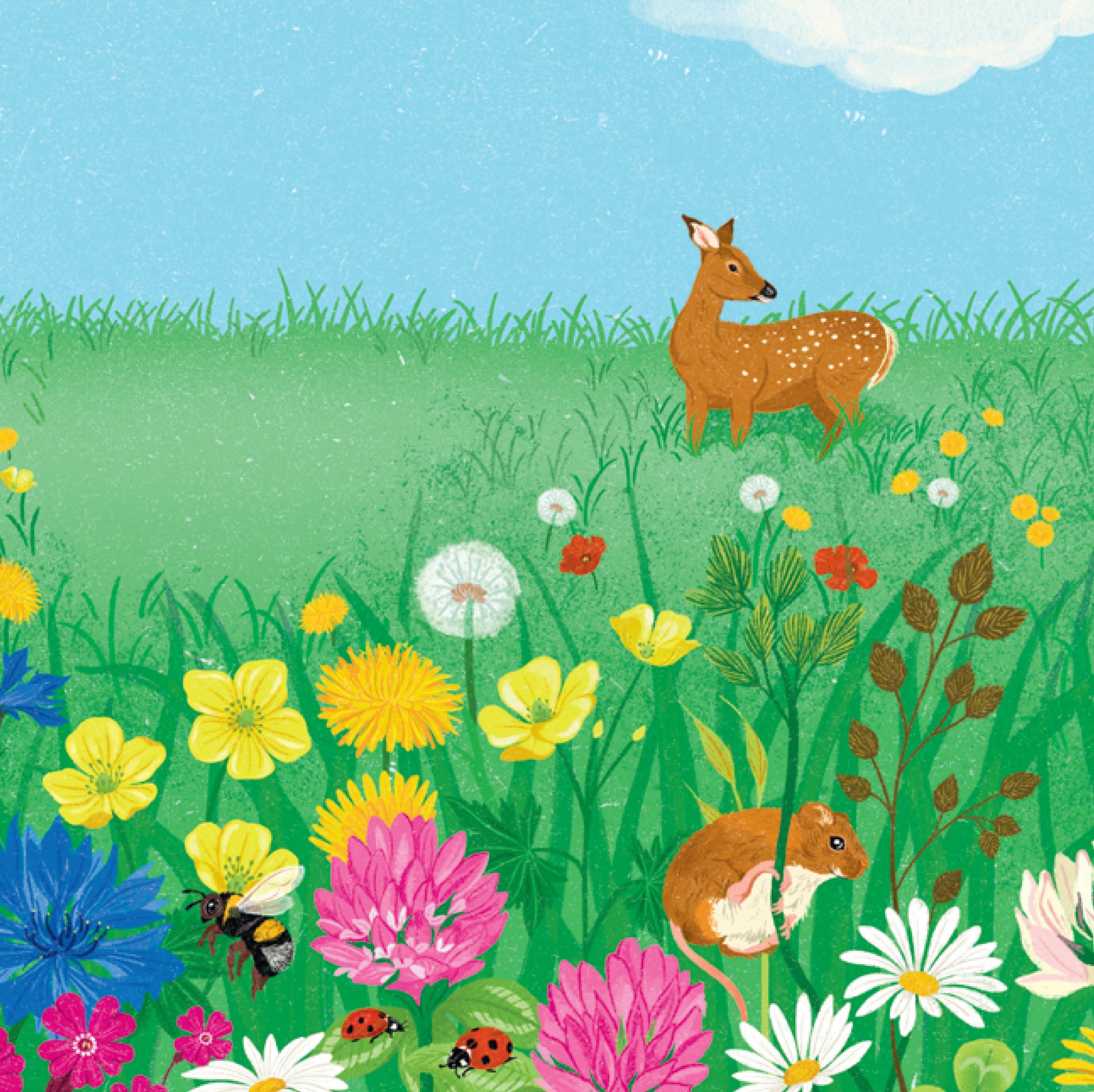
A meadow is a habitat shared by lots of plants and animals.
What insects can you see feeding on our nectar and pollen?
There are lots of animals, too, looking for food.
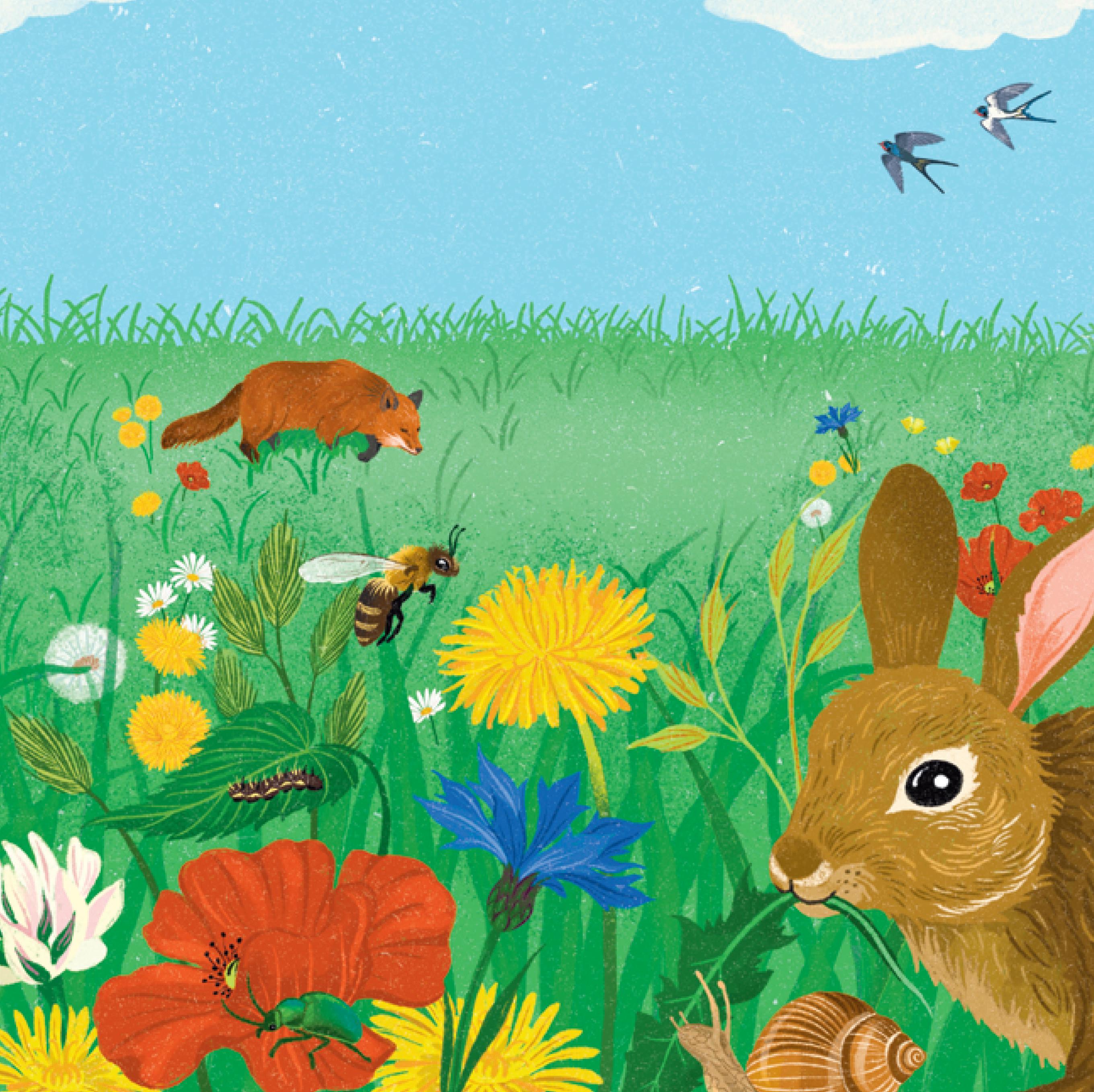
Animals can’t make their own food. They eat plants or other animals that eat plants.
Swallows arrive in late spring. They feed on insects.
A rabbit nibbles on leaves, while the fox hopes to catch the rabbit.
Here I am making my seeds, and so are my plant friends around me. We make our seeds in different ways.
Many flowering plants make their seeds by pollination. This means that pollen from the flower of one plant must attach to the flower of another.
Grasses use wind to blow pollen from one plant to another.
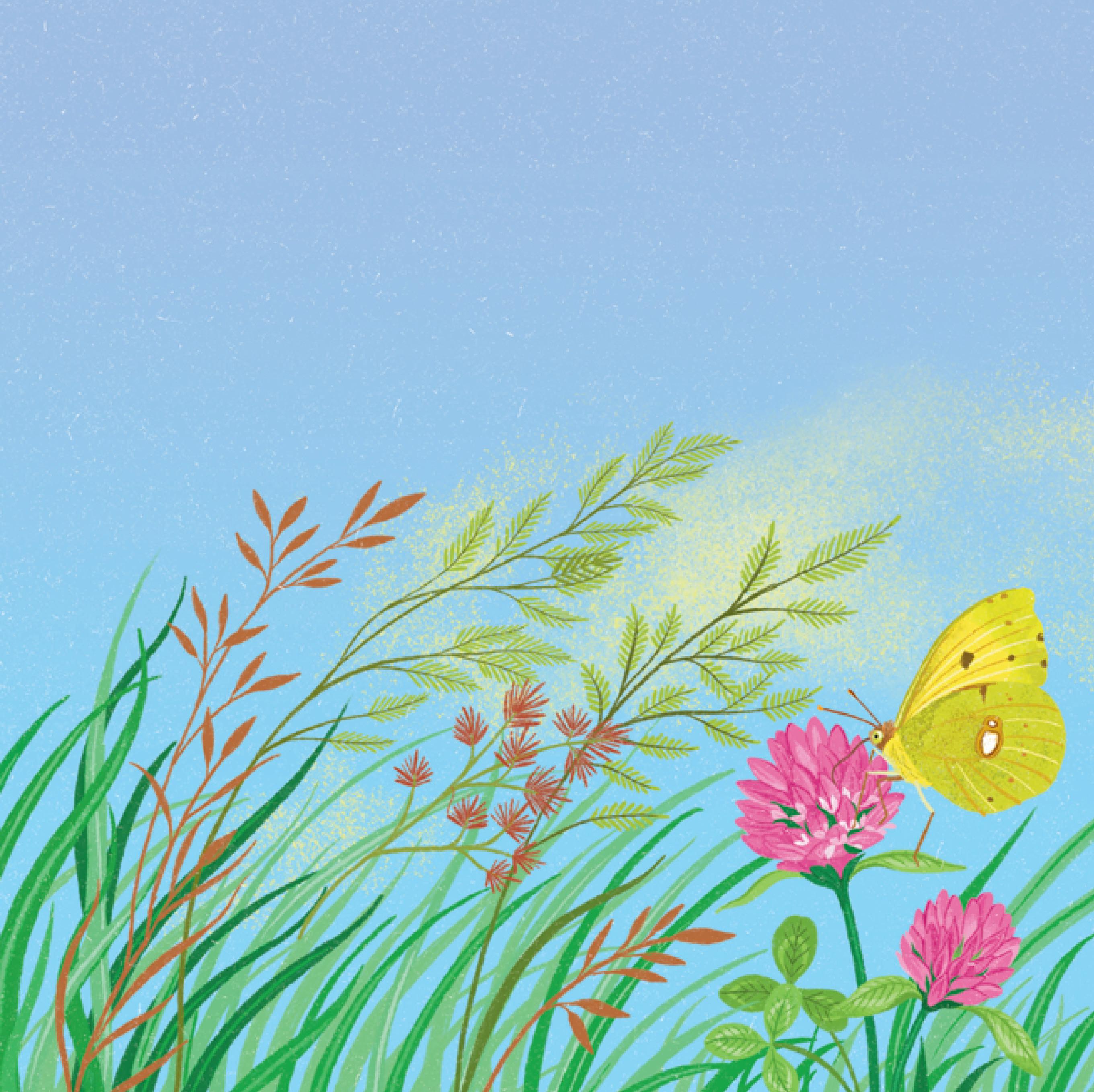
Insects, such as butterflies and bees, take clover pollen from flower to flower.
Here are my flower heads, closing up, even though the sun is shining. Inside, my florets are changing. They are forming seeds.
Common dandelions usually form seeds inside their florets without pollination.

After a few days, a dandelion flower closes up for a week or more. Its petals drop off, leaving wispy strands poking through the closed bracts.
Look at my flower heads now!
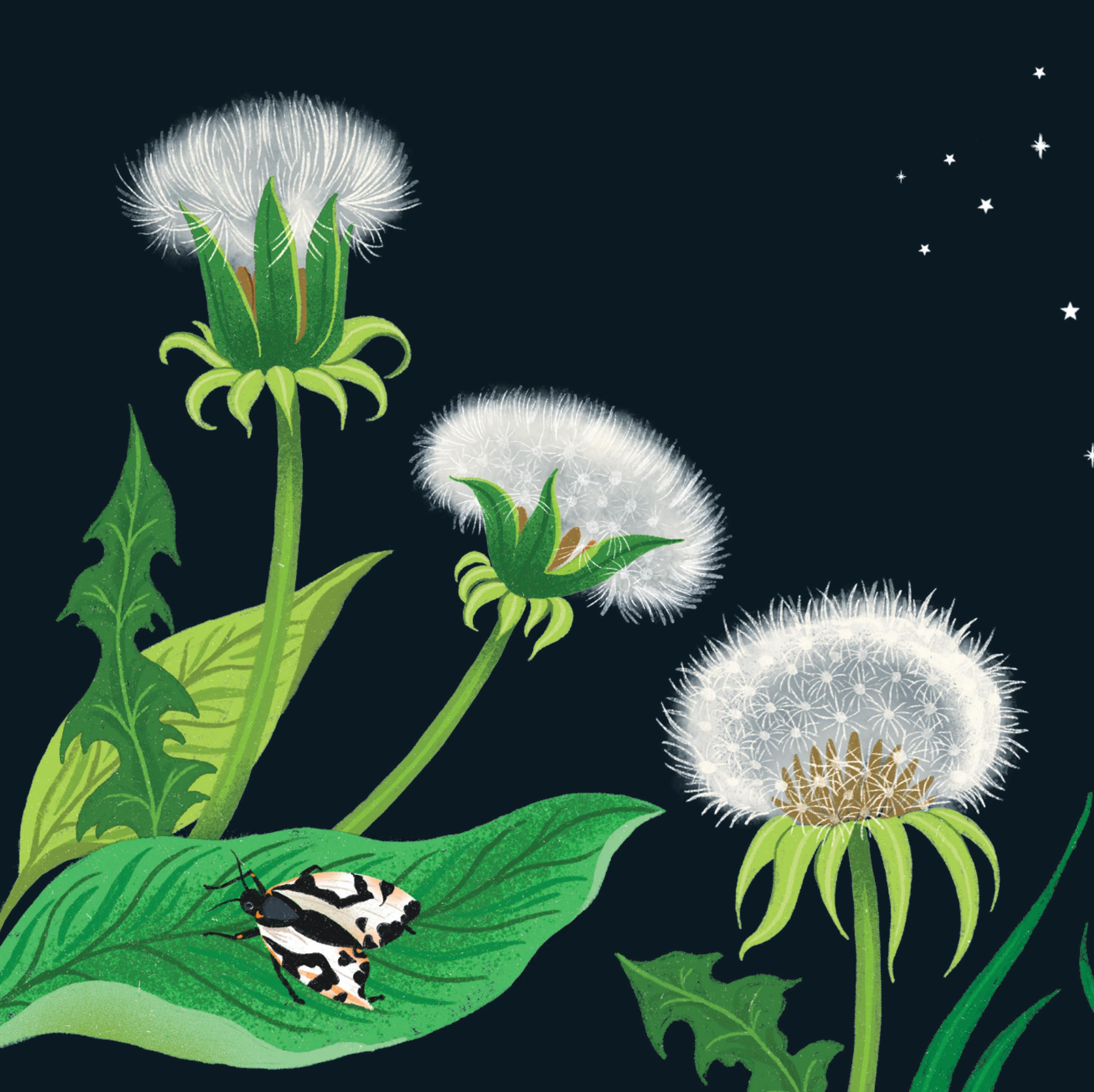
When the bracts open again, a magical transformation has taken place.
Each floret has formed a seed on a delicate, silky pappus. Together, the pappi form a ball shape. The seed heads stay open all the time.
My golden-sun flower has changed into a fluffy full moon.
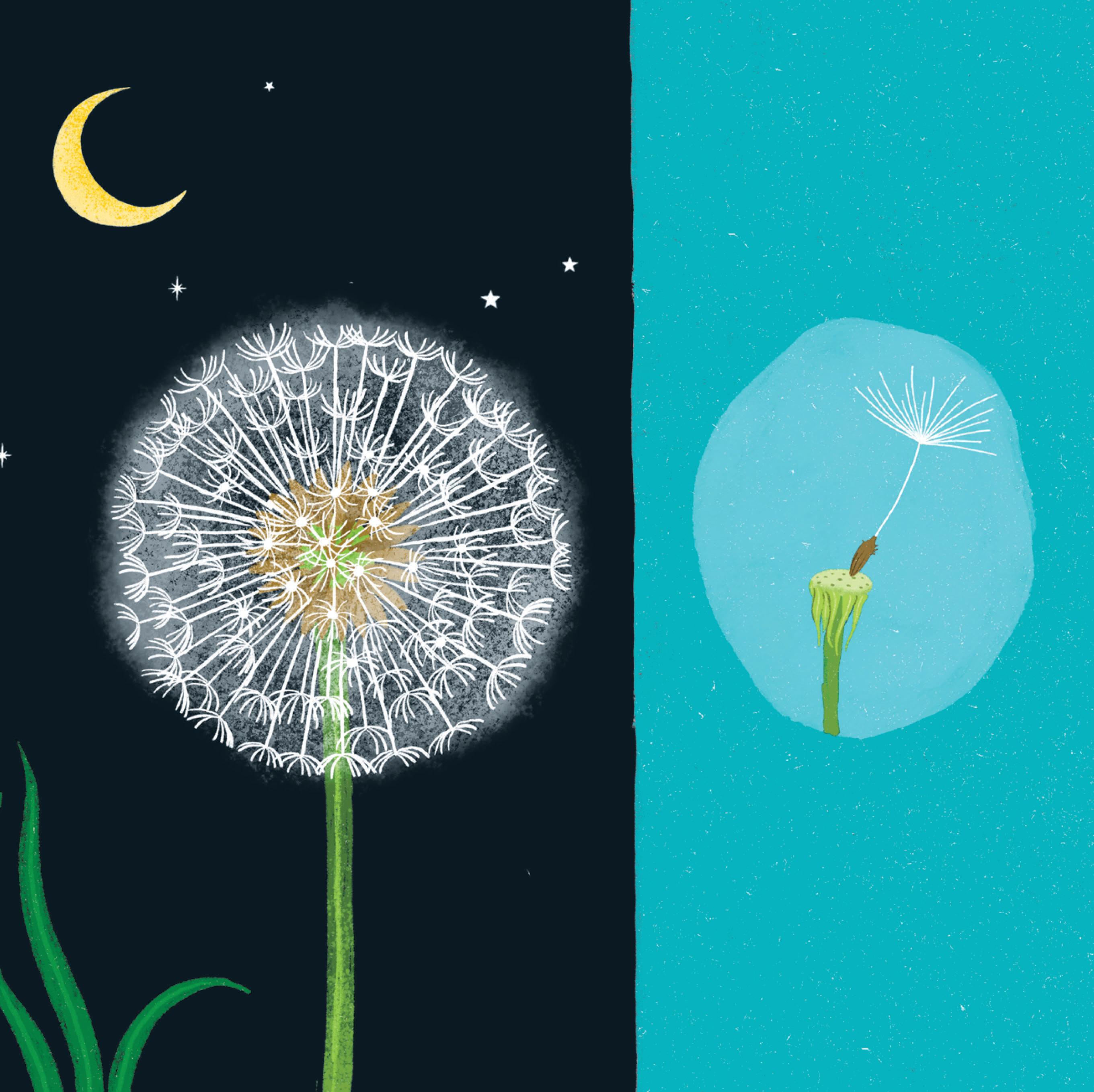
My seeds are ready, and I wait for the wind to carry them away. seed
receptacle
stem
The pappus is like a parachute. Air flows through the ring of tiny strands lifting the seed up and away. The seed is inside a hard, jagged casing called a capitulum.
Here are children. They each make a wish—and help me spread my seeds.
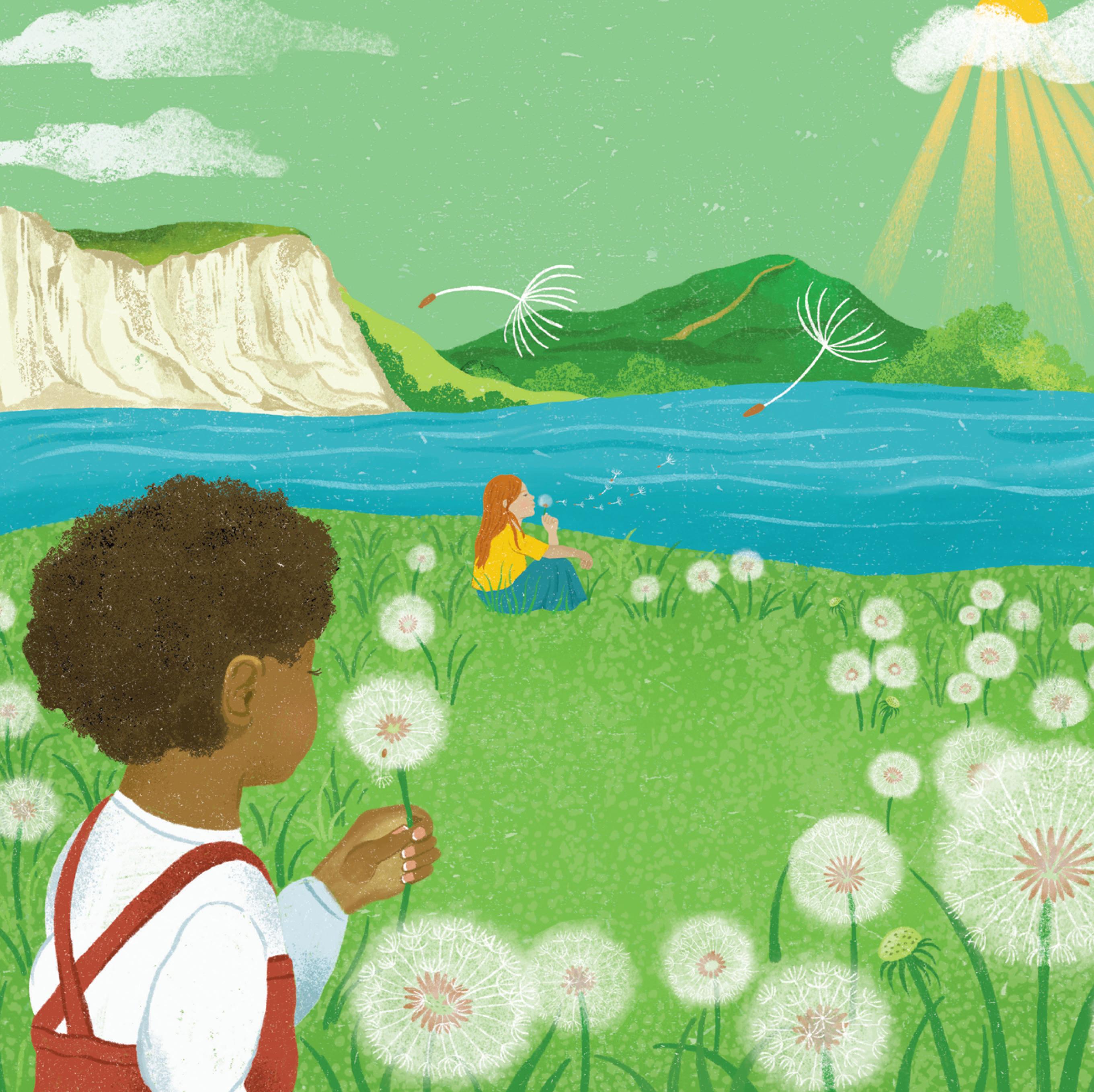
Dandelion seed heads can be called blowballs. Make a wish as you blow.
My fluffy pappi parachutes are amazing. Carried by the wind, they can take a seed far, far away from me.
Most dandelion seeds drop after a few yards but some travel long distances— as far as 50 miles.
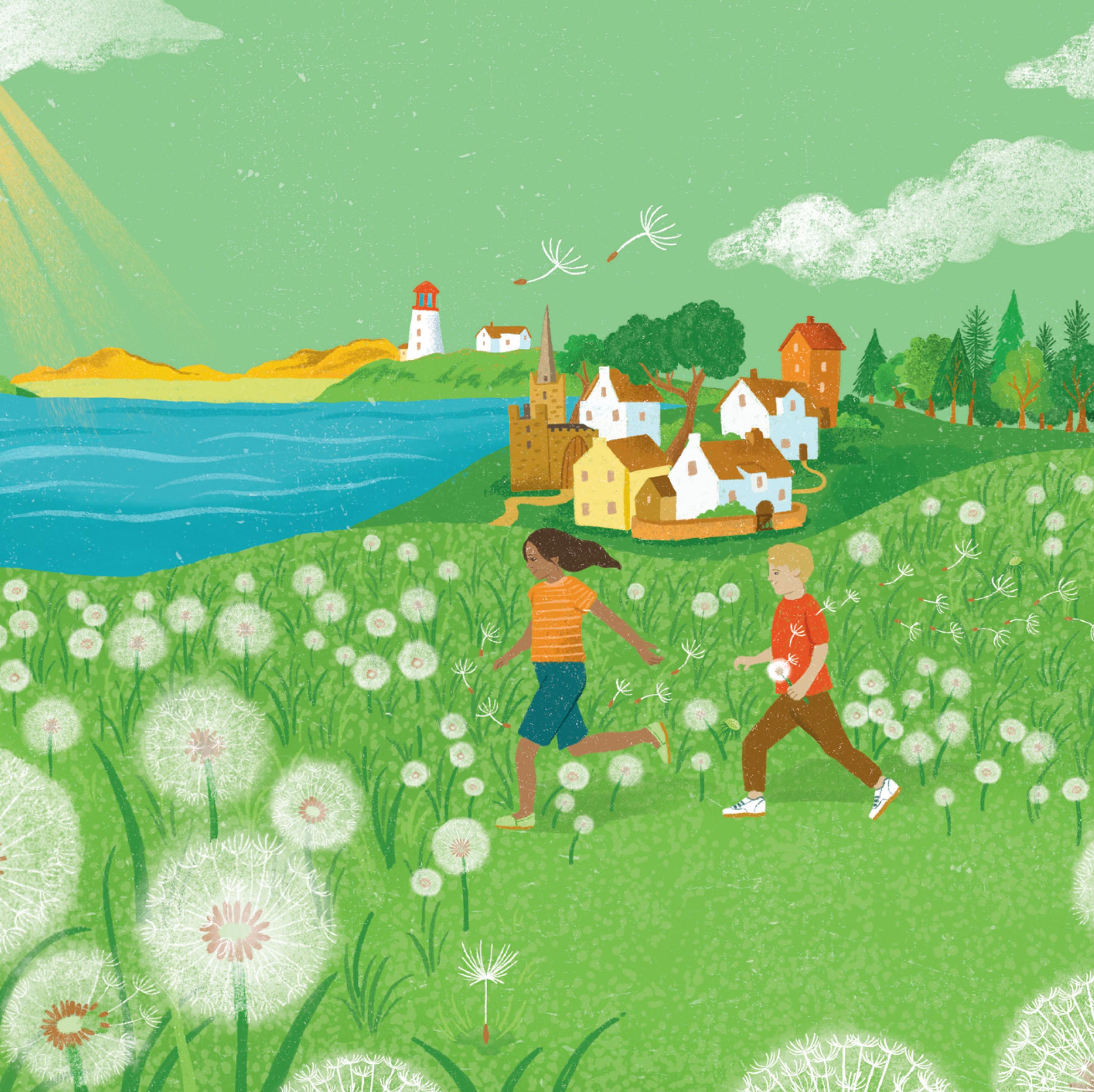
A pappus’s shape helps the seed land gently and upright on the ground, so it slips into the soil.
Look at my seedlings! Some have landed in people’s gardens. Others are growing in unusual places. Dandelions are happy to grow almost anywhere. . . . but they can grow in rocky or wasteland habitats.
Dandelions do well in people’s gardens and farmers’ fields . . .

Dandelions usually grow in temperate climates with four seasons, but can be found in mild temperate zones, such as around the Mediterranean Sea.
Now my seeds have flown away, I will rest for a while before I make new flowers and more fluffy dandelion seeds.
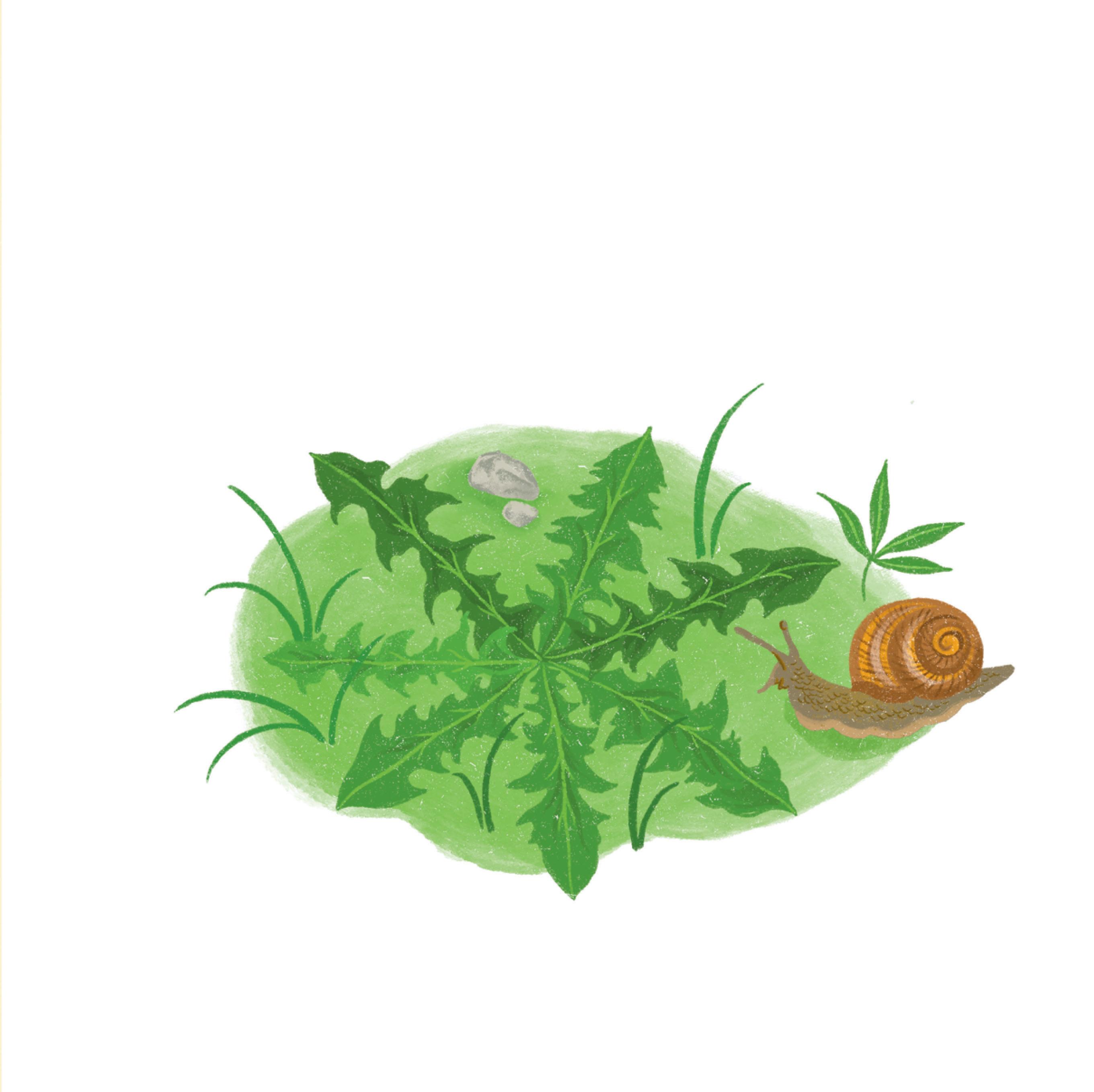
A plant may flower several times through the spring and summer, producing around 200 seeds each time. That could be as many as 5,000 seeds in a year.
Some people call us weeds, but we are just wildflowers growing in places that they don’t want us to grow. open
Here are some foragers. They pick my leaves and flowers but leave me to grow. They don’t think I’m a weed!
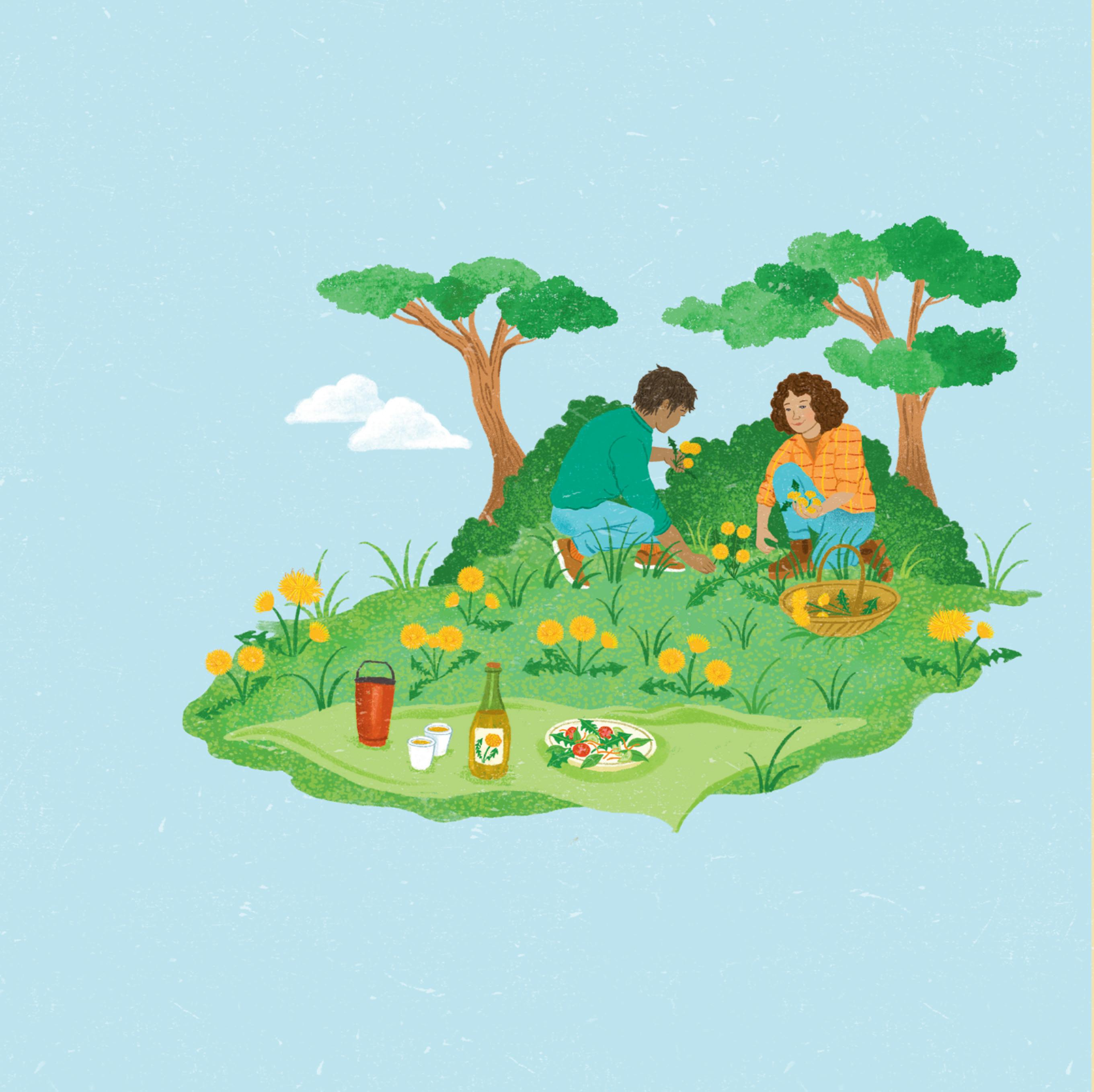
You can eat every part of a dandelion. They contain lots of vitamins.
The leaves are good in salads or cooked like spinach. The flowers flavor drinks.
The roots can be used to make coffee and to treat health problems, too. open
I am a wildflower that brings color to the spring.
Dandelions make pollen and nectar that pollinating insects need to survive.
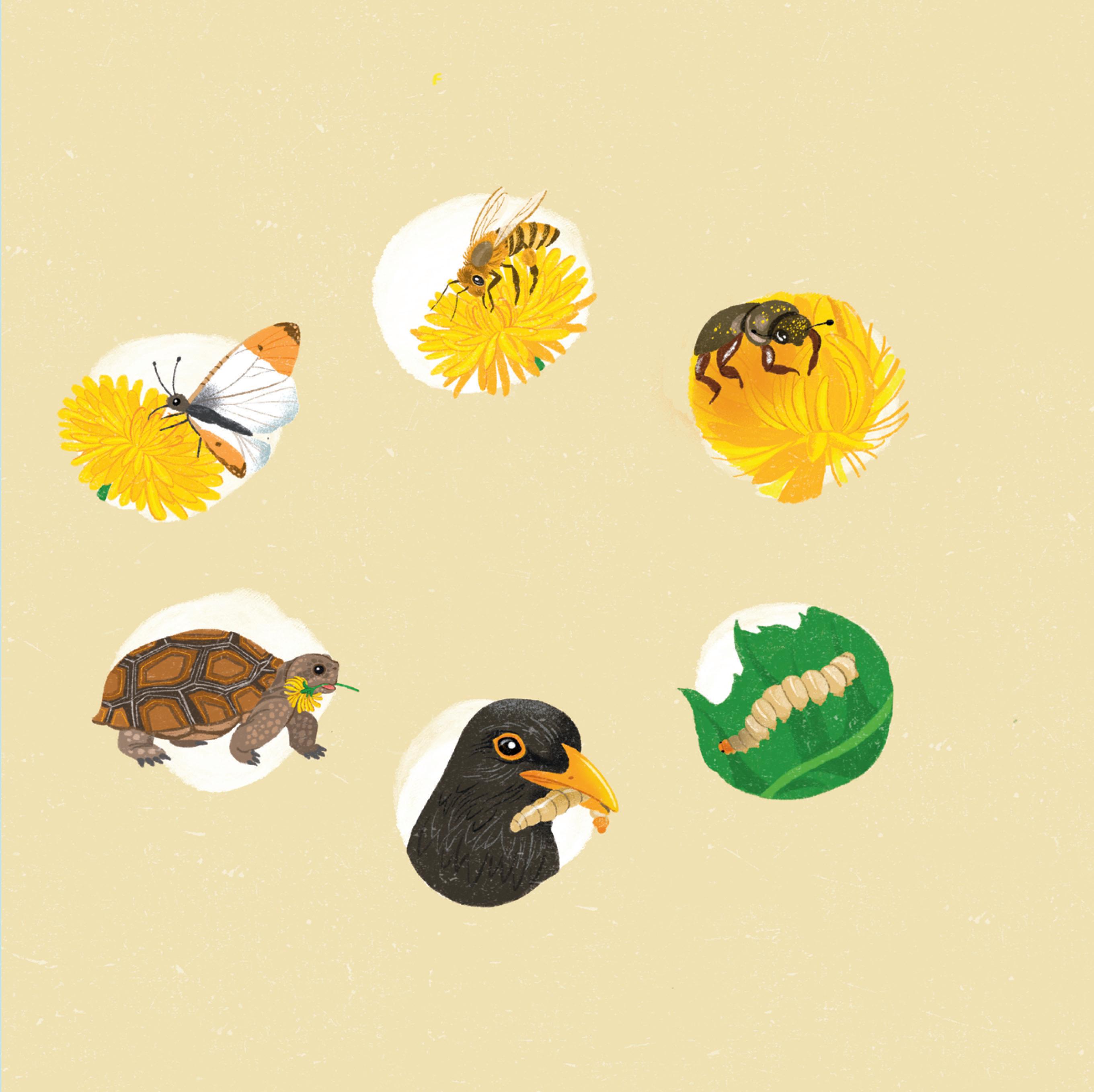
Pollinating insects, such as bees, butterflies, and beetles, make sure there is enough food for other animals to live.
Dandelions provide food for wild animals, farm animals, and pets.
I am a wildflower that starts food chains, so all animals—including people—benefit from us, whatever they eat.
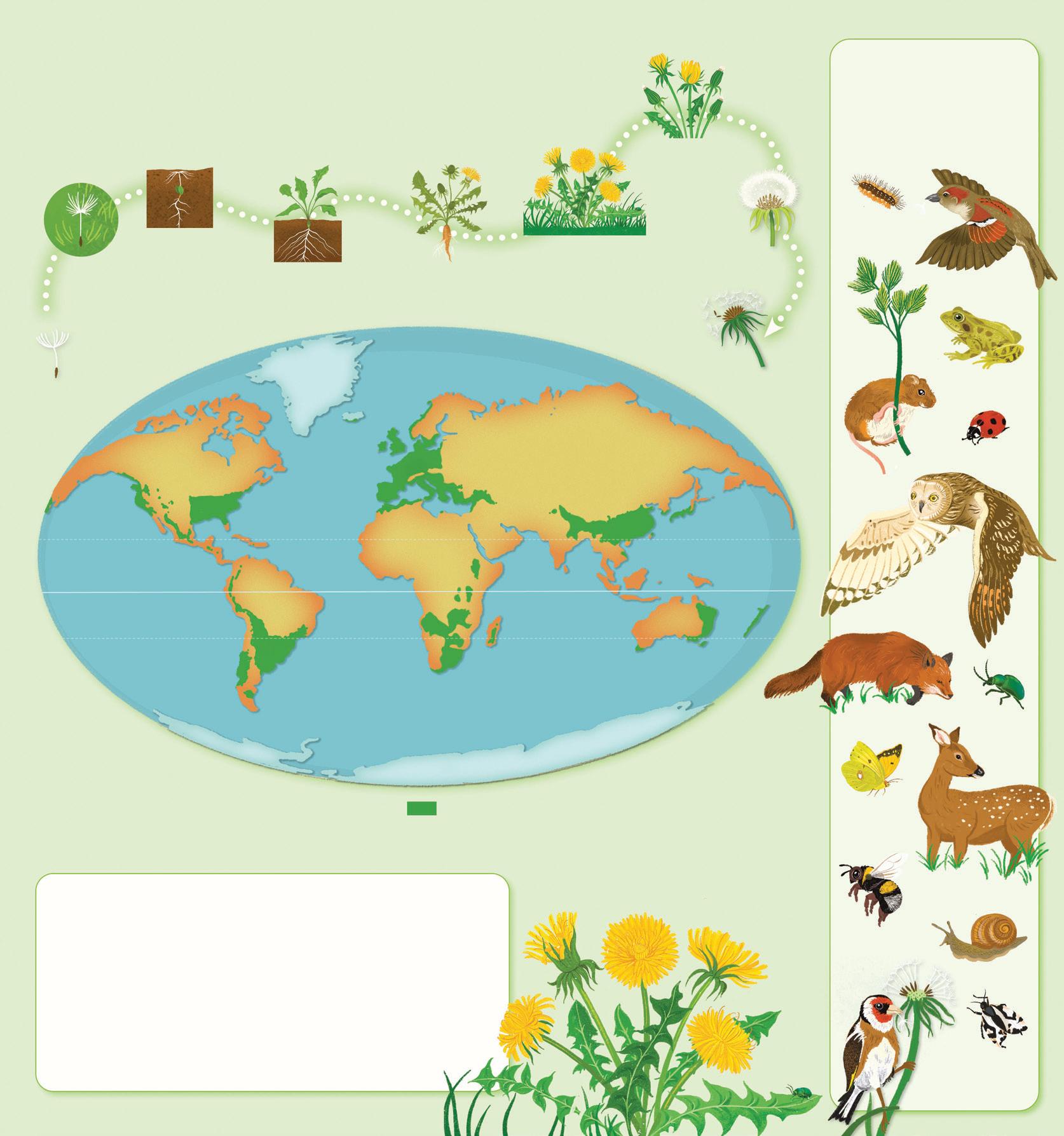
This is the life cycle that begins with a fluffy, flying dandelion seed and leads to a beautiful wildflower. A dandelion may live for over 10 years, making 5,000 flying seeds a year.
seed lands in soil
flying seed
seed starts to grow (2–3 weeks)
leaves grow with jagged edges (6 weeks)
Find these meadow-loving animals somewhere in the book. Are they daytime or nighttime creatures? mature dandelion with buds (1 year)
flowers bloom, opening in the day and closing at night (2 weeks later)
close to make seeds (3 weeks later)
(4 weeks later)
seed
Dandelions usually grow in temperate climates with four seasons but can be found elsewhere. They grow through the year but only flower in the spring and summer when it is warmer.
NATURAL RUBBER
Dandelions produce a milky liquid called latex—you see it when you break a stem or leaf. Latex is a natural rubber, now being used to develop dandelion car tires.
NATURAL SURVIVORS
Dandelions are successful mainly because they make and spread their seeds so well. They have another trick, too—new plants can grow from broken-off pieces of taproot.
FIXED IN TIME
Some dandelions don’t need pollination to make seeds. This is called apomixis. Without pollination they will not evolve anymore. They still produce pollen and nectar, which is good news for insects.
NATURAL ENGINEERING
Scientists are copying the structure of a dandelion’s seed pappus to improve the flight of small flying drones.
This book is about the common dandelion but there are lots of different dandelion species. The scientific name for them is Taraxacum. Botanists (plant scientists) who study them are called taraxacologists.

